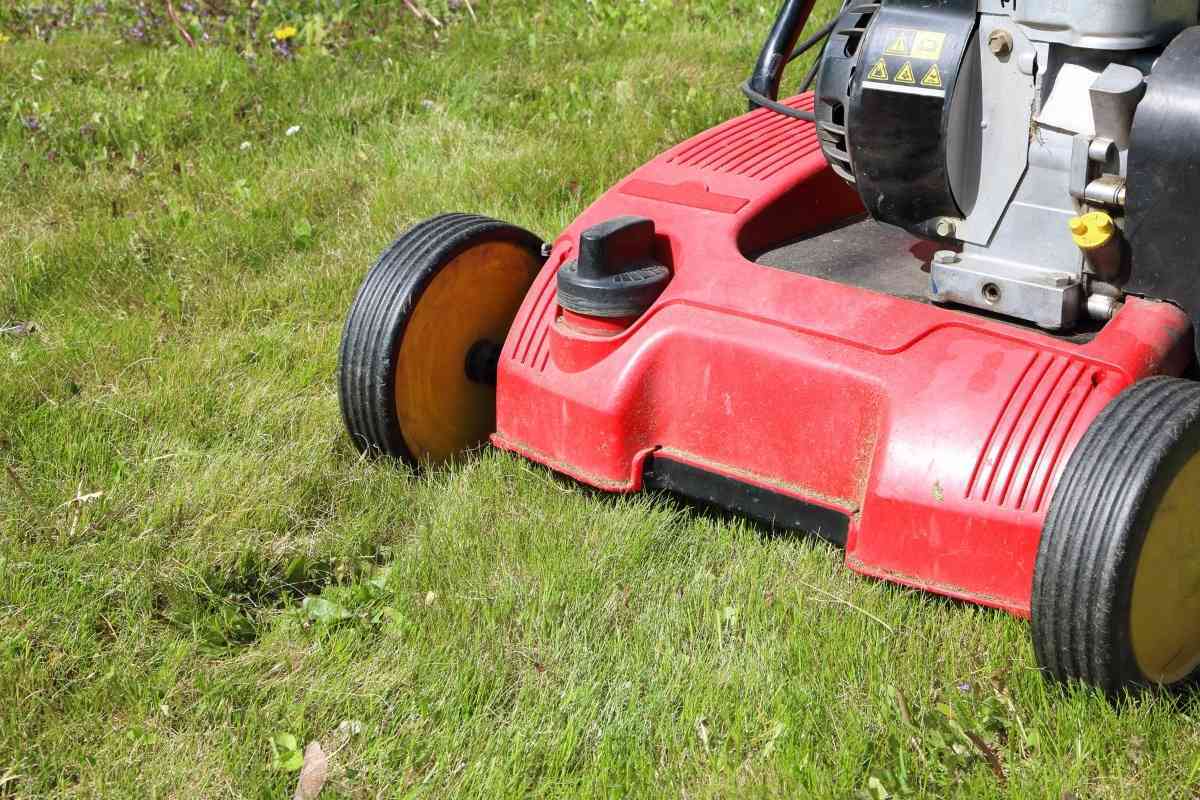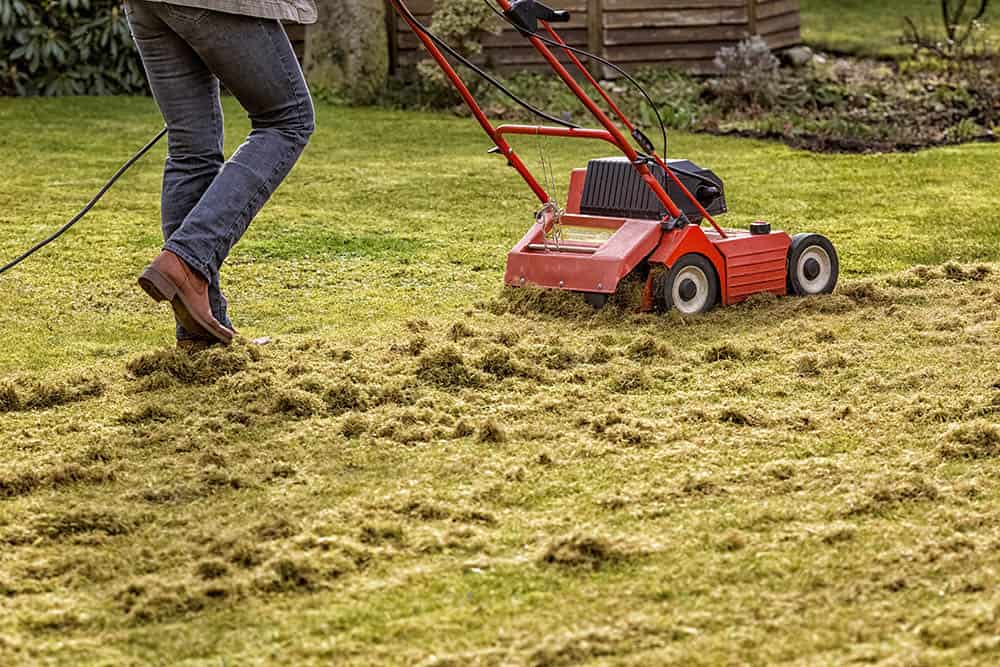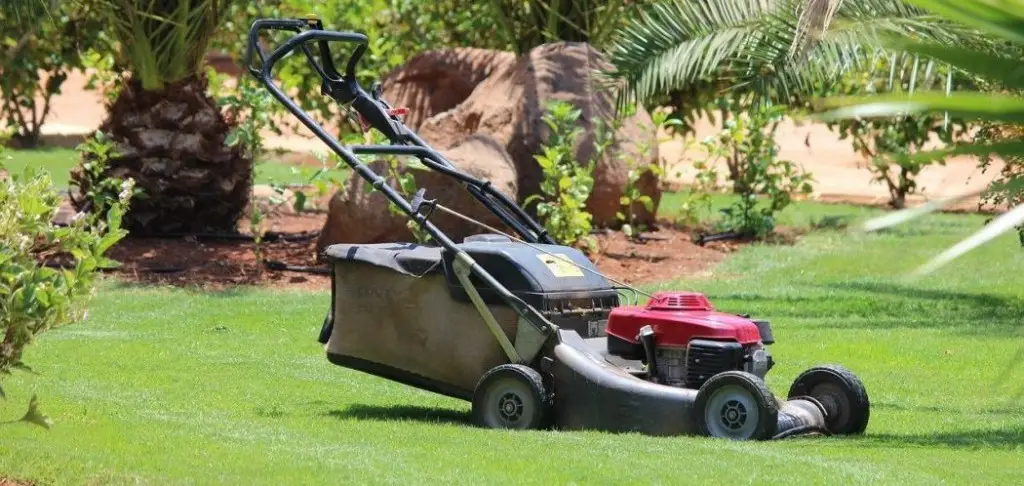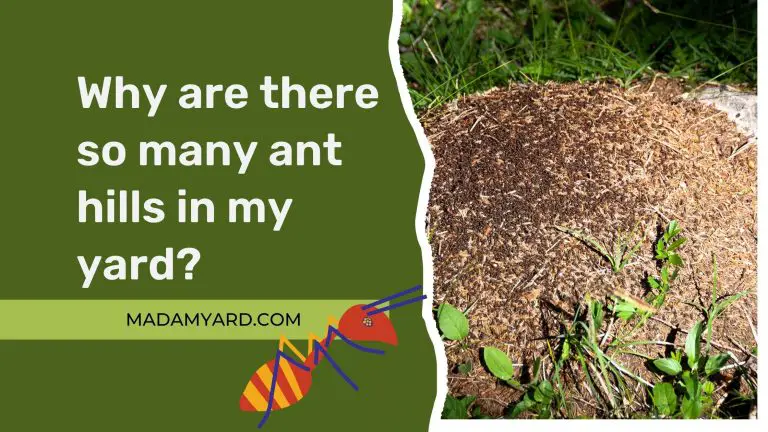Do Dethatching Blades Work?
Thatch is a mixture of dead and live plant material that builds up at the base of grass plants, where the stems meet the roots and soil. A thatch layer less than 1/2-inch thick might be helpful to your grass, but any thatch layer more than 1 inch can cause more damage than good. But, do dethatching blades work?
Once you’ve chosen when to dethatch your grass, you may use a few pieces of equipment to complete the procedure, such as a dethatcher or dethatching power rake. These may be expensive purchases and one more significant addition to your lawn tool inventory.
But what if you could connect a dethatching device to your lawnmower? The good news is that you may use mower-dethatching blades to do so!
But the key issue is whether or not dethatching blades operate and perform as effectively as a power rake or dethatcher.

What Are Dethatching Blades?
Dethatching blades are accessories that may occasionally convert your lawn mower into a dethatcher. After removing the thatch accumulation from your lawn using a dethatching blade, you may remove it and reconnect your mowing blades for regular lawn care.
Most dethatching blades intend to suit 20-inch lawnmowers. However, some lawn mower manufacturers provide a selection of dethatching blades to accommodate most lawn mower widths.
They differ from lawnmower blades because they contain protruding tines or spikes rather than flat blades that slice through the grass. Some dethatcher blades feature two tines on each end of the blade, while others might have many times.
These tines are often constructed of metal or durable plastic. Still, regardless of the material, the tines must be able to pierce the thatch accumulation in your grass.
Mower Dethatching Blade Type Guide
Lawn mower dethatching blades are classified into two types: those with metal spring attachments and those with nylon trimmer line attachments.
Blades With Metal Spring Attachments
Blades with metal spring attachments may remove light-to-moderate thatch from lawns of 4,000 square feet or less. The correct operation is critical to success. These blades must adjust to the right height to guarantee optimal functioning, and the spring attachments must be checked and changed as needed.
Dethatching Blades With Nylon Trimmer Lines
Dethatching blades with nylon trimmer lines remove considerably less thatch. They are prone to damaging healthy vegetation. The nylon line cannot distinguish between dead, dormant, and growing grass. It would be best if you used these blades at any cost.

Advantages Of Dethatching Lawn Mower Blades
The benefit of dethatching using dethatching lawn mower blades is that you will not need to purchase additional lawn equipment.
These blades are compatible with your mower, and you remove the mower blade and replace it with the dethatching blade. It might assist in aerating the grass and fixing thatch-covered lawn parts. It will clear the trash and cut through rugged debris mats.
Dethatching your lawn as part of your maintenance routine will allow you to utilize dethatching blades with your mower. Remove the mowing blade and replace it with the spring-tined dethatching blade. Set your mower’s height to the highest setting and begin dethatching.
Disadvantages Of Dethatching Lawn Mower Blades
Using dethatched lawn mower blades has various drawbacks. First and foremost, they do not operate well with a thatch more than half an inch thick. Furthermore, switching from mowing to dethatching necessitates the replacement of blades.
Dethatching lawn mower blades work effectively for small yards with light to medium thatch but not for more. To remove the thatch, you will need to utilize a different approach. Another downside is that the tines may bend, so you must keep an eye on them and replace them as required.
How To Dethatch With A Lawn Mower?
To dethatch with a lawn mower, perform the following procedures to maintain a healthy lawn and get the most out of your dethatching blade. Follow these winning tips:
1. Replace your regular mower blade with a dethatching blade with spring tines.
2. Adjust the mower height to its highest level.
3. Mow a tiny section of your lawn as a test. Continue to move. A dethatching blade may form “crop circles” by removing vast quantities of material if left in one spot.
4. Examine the area you’ve test-mowed. Reduce the blade height progressively if required until the blade makes excellent contact with the yard. When brown, dead thatch removes but healthy grass remains intact, the blade is at the proper height.
5. Stop mowing regularly to examine the dethatching blade. During dethatching, spring tines may be twisted or blunted. These springs must replace regularly. If the metal tines are twisted or damaged, they will not dethatch your grass correctly.
6. When dethatching, wear eye protection and trousers since dirt, pebbles, and debris may discharge from the mower chute during operation.
7. After dethatching your grass, collect the thatch using a manual dethatching rake or a conventional garden rake. It may be thrown away or placed in a compost pile.
Dethatching an actively developing lawn should result in green grass with dirt visible underneath rather than a brown/yellow thatch covering. Stop and adjust the blade height if your dethatching blade is causing harm to your grass, or look into alternative dethatching choices. Working slowly and carefully is the key to successfully dethatching lawns using a mower.

Do Dethatching Mower Blades Work?
Using a dethatching blade with your mower is a fantastic and cost-effective choice if you have a tiny yard or a light covering of thatch.
If you have a more oversized yard or more than an inch of thatch, your best choice is to purchase or rent a power rake from a local home and garden shop.
Yes, renting or purchasing a dethatching machine is more expensive than using a mower’s dethatching blade. Still, it produces superior results and decreases the likelihood of grass damage.
Alternatives To Dethatching Blades
There are numerous ways to dethatch your grass. You may use a dethatching machine instead of a dethatching blade. It is considerably more costly, but dethatchers are mainly intended to dethatch your grass. They may use every spring to ensure that your lawn remains healthy.
A power rake is another possibility. Power rakes and dethatchers are similar, but they remove thatch and debris in distinct methods. While a dethatching blade may use for thatch less than half an inch thick, a power rake can use if there is a visible layer of debris or thatch on the grass. It can withstand thicker thatch.
The mechanical power rake features a dethatching blade with spinning flails. These flails are active for digging out heavy layers of thatch.
They can remove up to four times the amount of thatch that a dethatcher can. When people wish to be overseeded, they employ the power rake. Ensure a visible layer of thatch is on top of the grass.
How To Choose An Appropriate Dethatching Blade?
Using a Dethatching blade provides advantages such as taking up less storage space and being highly cost-effective. You don’t even need to buy one since rental providers will offer you one at a low cost.
However, employing them has a huge disadvantage: if you choose them incorrectly, the blades might destroy your plants. To successfully dethatch, you must have sharp blades that can perform a decent job immediately.
If you have a big lawn, it’s not a good idea to use a light-duty lawn mower since you’ll have to spend a lot of time honing the blades. Heavy-duty blades, on the other hand, will provide you with longer-lasting cuts.
Dethatching blades with metal spring attachments help remove light thatch from small yards. Dethatching blades with nylon trimmer lines is one thing you should avoid. They are toxic, and if employed to remove thatch, they harm good grass and thatch.

How Much Does It Cost To Rent A Dethatcher?
A power rake or comparable dethatching instrument typically costs $50–$60 for a 4-hour rental—enough time to dethatch a medium to large-sized yard.
While a dethatching mower blade is roughly half the price, it will not accomplish the job as fast or remove as much thatch from your grass. Renting a power rake saves money since the operation is finished quicker and more thoroughly, so you won’t have to dethatch often.
Is Dethatching The Same As Power Raking?
Rakes powered by motors are used to clear thatch off roofs. Dethatchers aren’t the same as these. The typical dethatcher is intended for light work and can remove around half an inch of thatch.
As the name implies, power rakes are dethatching rakes that have been powered. They can remove many inches of thatch at once.
Final Thoughts
Many people ask a specific question: ‘Do Dethatching Lawn Mower Blades Work?’ – and the answer is loud ‘no.’
There are other methods to thin your lawn’s thatch, particularly if you have a tiny garden with less than half an inch of thatch. In this case, a rake and some plain old-fashioned elbow grease are your best bet.
If your lawn is larger – and has a deeper covering of thatch that is more than half an inch thick – a power rake is the most effective technique to get the best results.







